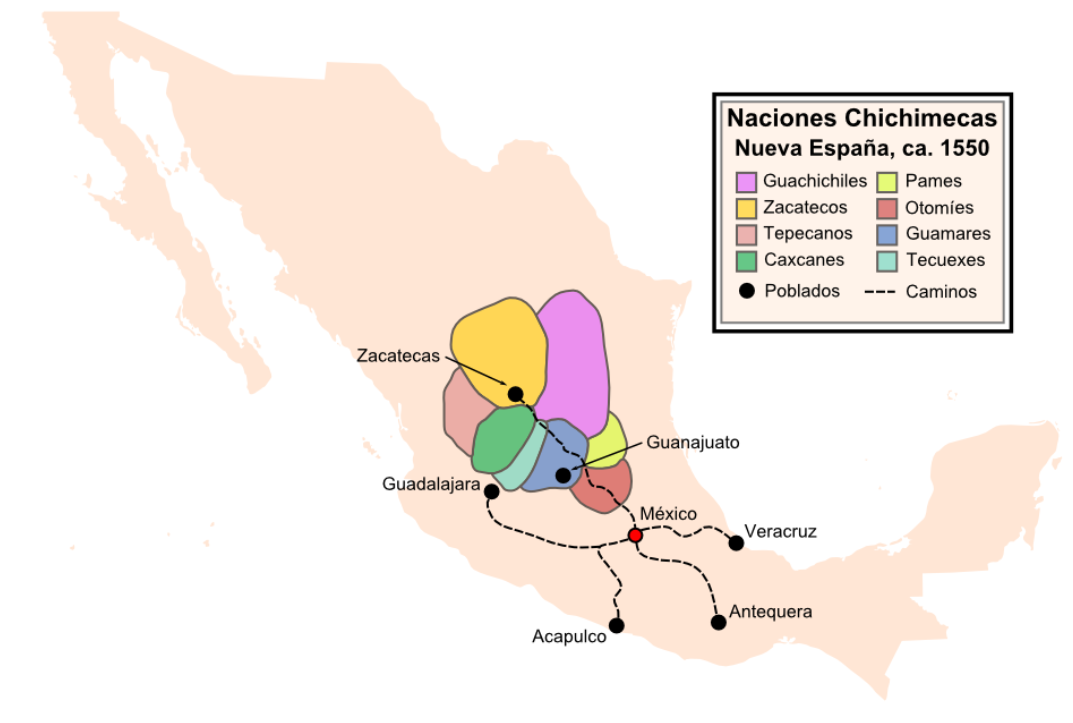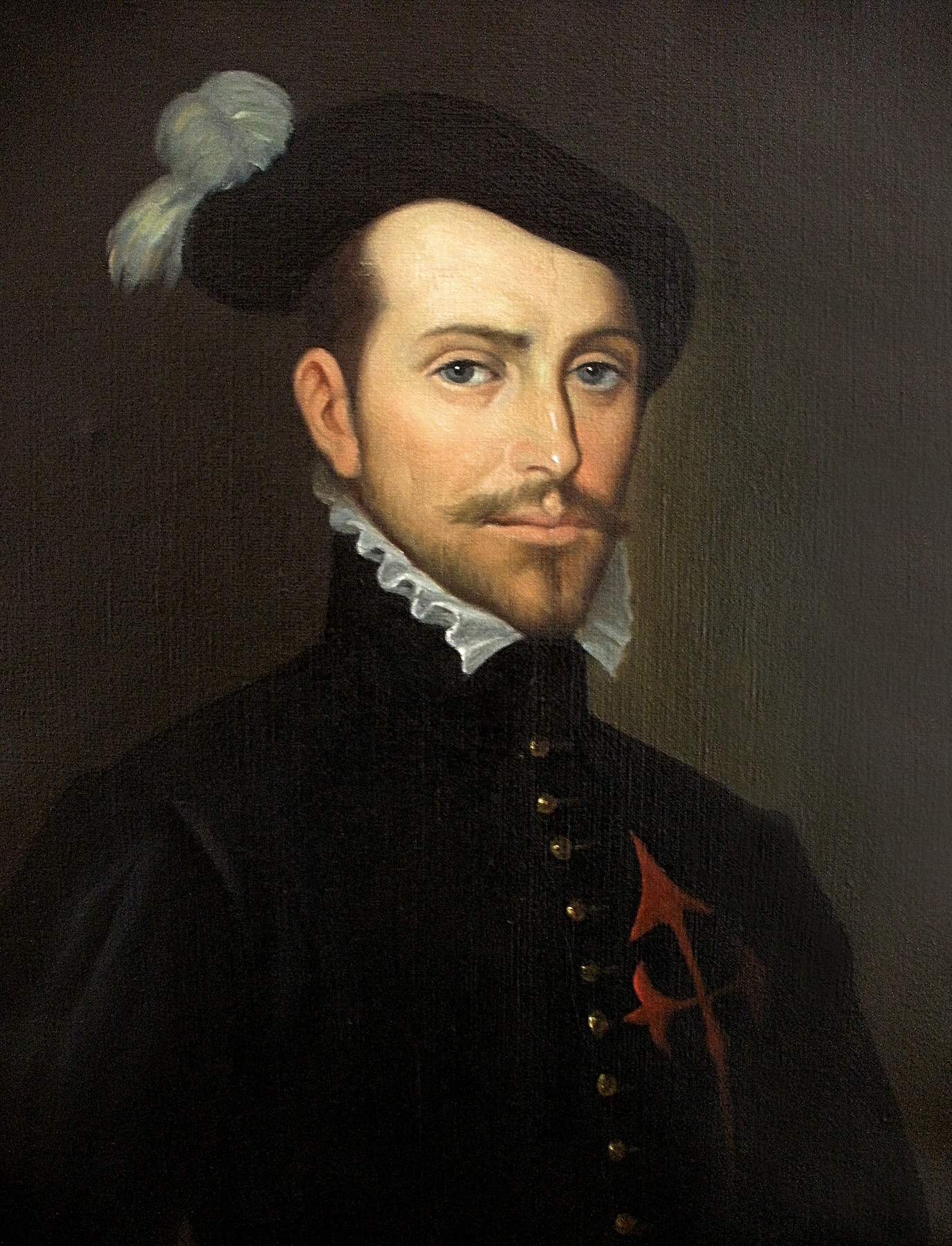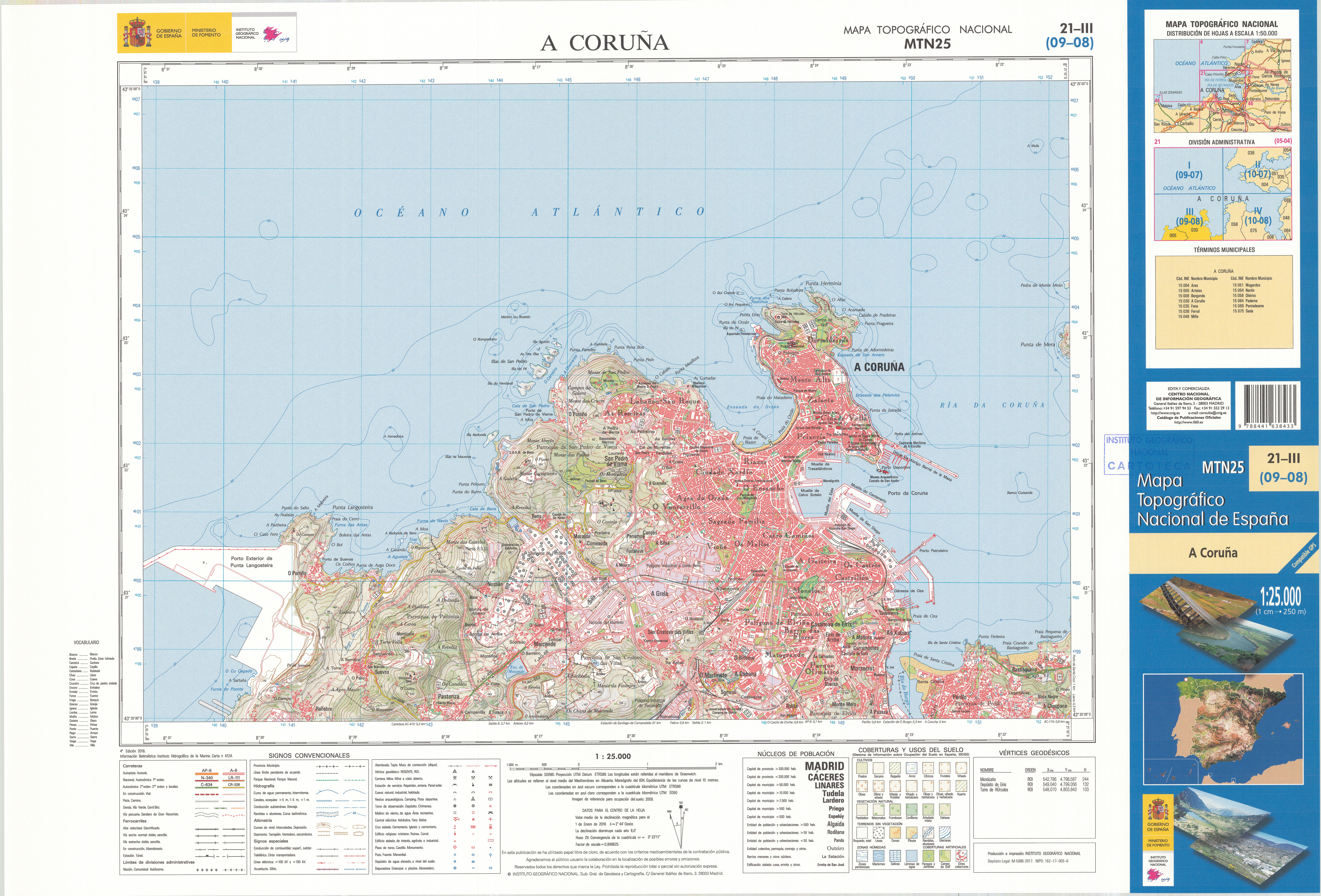|
Andrés De Urdaneta
Andrés de Urdaneta (1508 – June 3, 1568) was a maritime explorer for the Spanish Empire of Basque heritage, who became an Augustinian friar. At the age of seventeen, he accompanied the Loaísa expedition to the Spice Islands where he spent more than eight years. Around 1540 he settled in New Spain and became an Augustinian monk in 1552. At the request of Philip II he joined the Legazpi expedition for a return to the Philippines. In 1565, Urdaneta discovered and plotted an easterly route across the Pacific Ocean, from the Philippines to Acapulco in the Viceroyalty of New Spain. The route made it practical for Spain to colonize the Philippines and was used as the Manila galleon trade route for more than two hundred years. He played an important role in establishing the Catholic faith in the Philippines and was considered a "protector of the Indians" for his treatment of the Philippine natives. [...More Info...] [...Related Items...] OR: [Wikipedia] [Google] [Baidu] |
Ordizia
Ordizia, formerly known as Villafranca de Ordizia, is a town and municipality located in the Goierri region of the province of Gipuzkoa, in the autonomous community of the Basque Country, northern Spain. The professional cycle road race Prueba Villafranca de Ordizia Prueba Villafranca de Ordizia – Clásica de Ordizia is a Spanish professional cycle road race held in Ordizia, Basque Country. The first edition was held in 1922. Since 2005, the race has been organized as a 1.1 event on the UCI Europe Tour ... is held yearly in Ordizia. References External links Official website Ordiziako Ahotsa ORDIZIA in the Bernardo Estornés Lasa - Auñamendi Encyclopedia (Euskomedia Fundazioa) EAJ-PNV Ordizia Municipalities in Gipuzkoa {{basque-geo-stub ... [...More Info...] [...Related Items...] OR: [Wikipedia] [Google] [Baidu] |
Juan Sebastián Elcano
Juan Sebastián Elcano (Elkano in modern Basque; sometimes given as ''del Cano''; 1486/1487Some sources state that he was born in 1476. Most of this sources try to make a point about him participating on a military campaign at the Mediterranean when we was a child. According to his own answer of the age he had when he boarded the expedition, he was born 10 years later, around 1486 or 1487. – 4 August 1526) was a Spanish navigator, ship-owner and explorer of Basque origin from Getaria, part of the Crown of Castile when he was born, best known for having completed the first circumnavigation of the Earth in the ship ''Victoria'' on the Magellan expedition to the Spice Islands. He received recognition for his achievement by Charles I of Spain with a coat of arms bearing a globe and the Latin motto ''Primus circumdedisti me'' (You were the first to circumnavigate me). Despite his achievements, information on Elcano is scarce and he is the subject of great historiographical controve ... [...More Info...] [...Related Items...] OR: [Wikipedia] [Google] [Baidu] |
Mixtón War
The Mixtón War (1540-1542) was a rebellion by the Caxcan people of northwestern Mexico against the Spanish conquerors. The war was named after Mixtón, a hill in Zacatecas which served as an Indigenous stronghold. The Caxcanes Although other indigenous groups also fought against the Spanish in the Mixtón War, the Caxcanes were the "heart and soul" of the resistance. The Caxcanes lived in the northern part of the present-day Mexican state of Jalisco, in southern Zacatecas, and Aguascalientes. They are often considered part of the Chichimeca, a generic term used by the Spaniards and Aztecs for all the nomadic and semi-nomadic Native Americans living in the deserts of northern Mexico. However, the Caxcanes seem to have been sedentary, depending upon agriculture for their livelihood and living in permanent towns and settlements. They were, perhaps, the most northerly of the agricultural, town-and-city dwelling peoples of interior Mexico. The Caxcanes are believed to have spok ... [...More Info...] [...Related Items...] OR: [Wikipedia] [Google] [Baidu] |
Cristóbal De Oñate
Cristóbal de Oñate (1504, Spain—October 6, 1567, Pánuco, Zacatecas) was a Spanish Basque explorer, conquistador and colonial official in New Spain. He is considered the founder of the contemporary city of Guadalajara in 1531, as well as other places in Nueva Galicia (western New Spain). Background Oñate was born in 1504 in Vitoria, a town in the Basque province of Álava, Spain. His father was Juan Perez de Oñate and his mother was Osaña González. He was born into the House of Haro, whose origins go back to the Middle Ages. He was a grandson of Pedro de Baeza, Señor de Narrihondo, one of Spain's last feudal lords. He was a valued officer, a good executive, and one of the first millionaires in North America. He discovered the richest silver mines on the continent - the mines of Zacatecas, in the barren and desolate plateau where now stands the Mexican city of that name. Activities in New Spain Oñate arrived in New Spain in 1524 as the assistant to Rodrigo de Albor ... [...More Info...] [...Related Items...] OR: [Wikipedia] [Google] [Baidu] |
Gonzalo Fernández De Oviedo Y Valdés
Gonzalo Fernández de Oviedo y Valdés (August 14781557), commonly known as Oviedo, was a Spanish soldier, historian, writer, botanist and colonist. Oviedo participated in the Spanish colonization of the West Indies, arriving in the first few years after Christopher Columbus, in 1492, became the first European to arrive at the islands. Oviedo's chronicle ''Historia general de las Indias'', published in 1535 to expand on his 1526 summary ''La Natural hystoria de las Indias'' (collectively reprinted, three centuries after his death, as ''Historia general y natural de las Indias''), forms one of the few primary sources about it. Portions of the original text were widely read in the 16th century in Spanish, English, Italian and French editions, and introduced Europeans to the hammock, the pineapple, and tobacco as well as creating influential representations of the colonized peoples of the region. Early life Oviedo was born in Madrid of an Asturian lineage and educated in the court o ... [...More Info...] [...Related Items...] OR: [Wikipedia] [Google] [Baidu] |
Pedro De Alvarado
Pedro de Alvarado (; c. 1485 – 4 July 1541) was a Spanish conquistador and governor of Guatemala.Lovell, Lutz and Swezey 1984, p. 461. He participated in the conquest of Cuba, in Juan de Grijalva's exploration of the coasts of the Yucatán Peninsula and the Gulf of Mexico, and in the conquest of the Aztec Empire led by Hernán Cortés. He is considered the conquistador of much of Central America, including Guatemala, Honduras and El Salvador. Character and appearance Pedro de Alvarado was flamboyant and charismatic, and was both a brilliant military commander and a cruel, hardened man. His hair and beard were red, which reminded the Aztecs of their sun-god (often painted red) Tōnatiuh. He was handsome, and presented an affable appearance, but was volatile and quick to anger.Burland 1973, p. 216. He was ruthless in his dealings with the indigenous peoples he set out to conquer. Historians judge that his greed drove him to excessive cruelty,Recinos 1986, p. 205. and his ... [...More Info...] [...Related Items...] OR: [Wikipedia] [Google] [Baidu] |
Council Of The Indies
The Council of the Indies ( es, Consejo de las Indias), officially the Royal and Supreme Council of the Indies ( es, Real y Supremo Consejo de las Indias, link=no, ), was the most important administrative organ of the Spanish Empire for the Americas and those territories it governed, such as the Spanish East Indies. The crown held absolute power over the Indies and the Council of the Indies was the administrative and advisory body for those overseas realms. It was established in 1524 by Charles V to administer "the Indies," Spain's name for its territories. Such an administrative entity, on the conciliar model of the Council of Castile, was created following the Spanish conquest of the Aztec empire in 1521, which demonstrated the importance of the Americas. Originally an itinerary council that followed Charles V, it was subsequently established as an autonomous body with legislative, executive and judicial functions by Philip II of Spain and placed in Madrid in 1561. The Council o ... [...More Info...] [...Related Items...] OR: [Wikipedia] [Google] [Baidu] |
Valladolid
Valladolid () is a Municipalities of Spain, municipality in Spain and the primary seat of government and de facto capital of the Autonomous communities of Spain, autonomous community of Castile and León. It is also the capital of the province of Valladolid, province of the same name. It has a population around 300,000 people (2021 est.). Population figures from 1 January 2013. The city is located roughly in the centre of the northern half of the Iberian Peninsula's Meseta Central, at the confluence of the Pisuerga River, Pisuerga and Esgueva rivers before they join the Duero, surrounded by winegrowing areas. The area was settled in pre-Roman times by the Celtic Vaccaei people, and then by Ancient Rome, Romans themselves. The settlement was purportedly founded after 1072, growing in prominence within the context of the Crown of Castile, being endowed with fairs and different institutions such as a collegiate church, University of Valladolid, University (1241), Court (royal), Ro ... [...More Info...] [...Related Items...] OR: [Wikipedia] [Google] [Baidu] |
Treaty Of Zaragoza
The Treaty of Zaragoza, also called the Capitulation of Zaragoza (alternatively spelled Saragossa) was a peace treaty between Castile and Portugal, signed on 22 April 1529 by King John III of Portugal and the Castilian emperor Charles V, in the Aragonese city of Zaragoza. The treaty defined the areas of Castilian and Portuguese influence in Asia, in order to resolve the "Moluccas issue", which had arisen because both kingdoms claimed the Maluku Islands for themselves, asserting that they were within their area of influence as specified in 1494 by the Treaty of Tordesillas. The conflict began in 1520, when expeditions of both kingdoms reached the Pacific Ocean, because no agreed meridian of longitude had been established in the Orient. Background: the Moluccas issue In 1494 Castile and Portugal signed the Treaty of Tordesillas, dividing the world into two areas of exploration and colonisation: the Castilian and the Portuguese. It established a meridian in the Atlantic Ocean, ... [...More Info...] [...Related Items...] OR: [Wikipedia] [Google] [Baidu] |
Ternate
Ternate is a city in the Indonesian province of North Maluku and an island in the Maluku Islands. It was the ''de facto'' provincial capital of North Maluku before Sofifi on the nearby coast of Halmahera became the capital in 2010. It is off the west coast of Halmahera, and is composed of eight islands: Ternate, the biggest and main island of the city, and Moti, Hiri, Tifure, Mayau, Makka, Mano, and Gurida. In total, the city has a land area of 162.17 square kilometres and had a total population of 185,705 according to the 2010 census, and 205,001 according to the 2020 census, with a density of 1,264 people per square kilometre. It is the biggest and most densely populated city in the province, is the economic, cultural, and education center of North Maluku, and acts as a hub to neighbouring regions. It was the capital of the Sultanate of Ternate in the 15th and 16th centuries, and fought against the Sultanate of Tidore over control of the spice trade in the Moluccas before becomin ... [...More Info...] [...Related Items...] OR: [Wikipedia] [Google] [Baidu] |
Magellan Straits
The Strait of Magellan (), also called the Straits of Magellan, is a navigable sea route in southern Chile separating mainland South America to the north and Tierra del Fuego to the south. The strait is considered the most important natural passage between the Atlantic and Pacific oceans. It was discovered and first traversed by the Spanish expedition of Ferdinand Magellan in 1520, after whom it is named. Prior to this, the strait had been navigated by canoe-faring indigenous peoples including the Kawésqar. Magellan's original name for the strait was ''Estrecho de Todos los Santos'' ("Strait of All Saints"). The King of Spain, Emperor Charles V, who sponsored the Magellan-Elcano expedition, changed the name to the Strait of Magellan in honor of Magellan. The route is difficult to navigate due to frequent narrows and unpredictable winds and currents. Maritime piloting is now compulsory. The strait is shorter and more sheltered than the Drake Passage, the often stormy open sea ... [...More Info...] [...Related Items...] OR: [Wikipedia] [Google] [Baidu] |
A Coruña
A Coruña (; es, La Coruña ; historical English: Corunna or The Groyne) is a city and municipality of Galicia, Spain. A Coruña is the most populated city in Galicia and the second most populated municipality in the autonomous community and seventeenth overall in the country. The city is the provincial capital of the province of the same name, having also served as political capital of the Kingdom of Galicia from the 16th to the 19th centuries, and as a regional administrative centre between 1833 and 1982, before being replaced by Santiago de Compostela. A Coruña is located on a promontory in the Golfo Ártabro, a large gulf on the Atlantic Ocean. It is the main industrial and financial centre of northern Galicia, and holds the headquarters of the Universidade da Coruña. A Coruña is a packed city, the Spanish city featuring the tallest mean-height of buildings, also featuring a population density of 21,972 inhabitants per square km of built land area. Name Origin Ther ... [...More Info...] [...Related Items...] OR: [Wikipedia] [Google] [Baidu] |








